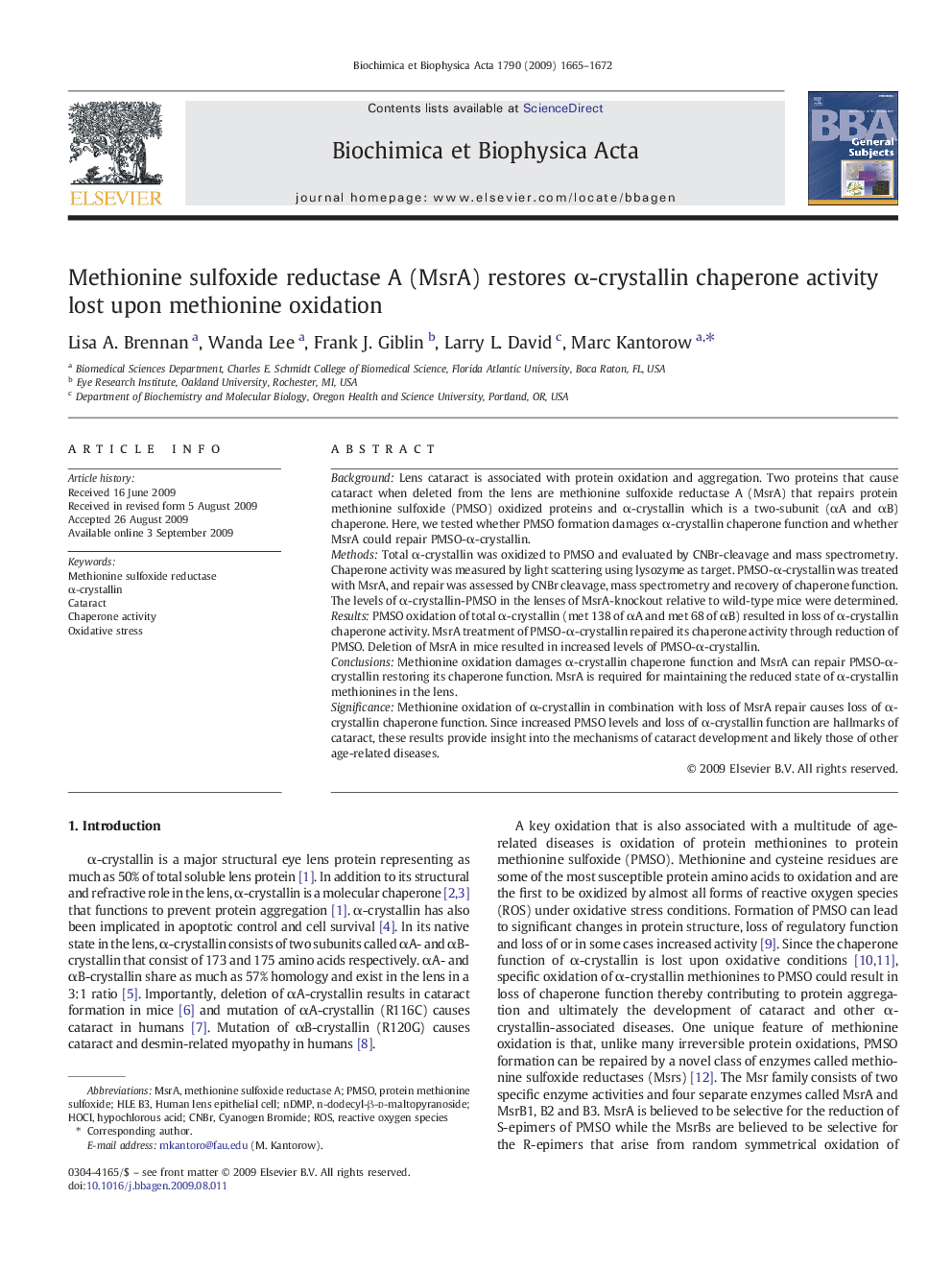| Article ID | Journal | Published Year | Pages | File Type |
|---|---|---|---|---|
| 1948212 | Biochimica et Biophysica Acta (BBA) - General Subjects | 2009 | 8 Pages |
BackgroundLens cataract is associated with protein oxidation and aggregation. Two proteins that cause cataract when deleted from the lens are methionine sulfoxide reductase A (MsrA) that repairs protein methionine sulfoxide (PMSO) oxidized proteins and α-crystallin which is a two-subunit (αA and αB) chaperone. Here, we tested whether PMSO formation damages α-crystallin chaperone function and whether MsrA could repair PMSO-α-crystallin.MethodsTotal α-crystallin was oxidized to PMSO and evaluated by CNBr-cleavage and mass spectrometry. Chaperone activity was measured by light scattering using lysozyme as target. PMSO-α-crystallin was treated with MsrA, and repair was assessed by CNBr cleavage, mass spectrometry and recovery of chaperone function. The levels of α-crystallin-PMSO in the lenses of MsrA-knockout relative to wild-type mice were determined.ResultsPMSO oxidation of total α-crystallin (met 138 of αA and met 68 of αB) resulted in loss of α-crystallin chaperone activity. MsrA treatment of PMSO-α-crystallin repaired its chaperone activity through reduction of PMSO. Deletion of MsrA in mice resulted in increased levels of PMSO-α-crystallin.ConclusionsMethionine oxidation damages α-crystallin chaperone function and MsrA can repair PMSO-α-crystallin restoring its chaperone function. MsrA is required for maintaining the reduced state of α-crystallin methionines in the lens.SignificanceMethionine oxidation of α-crystallin in combination with loss of MsrA repair causes loss of α-crystallin chaperone function. Since increased PMSO levels and loss of α-crystallin function are hallmarks of cataract, these results provide insight into the mechanisms of cataract development and likely those of other age-related diseases.
